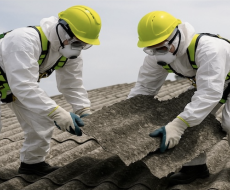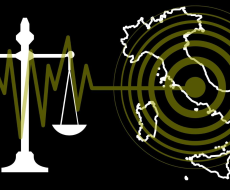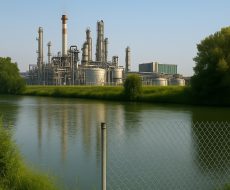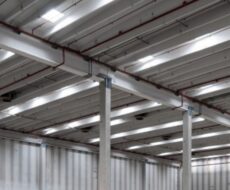
December 17, 2022
Examples of Intervention for seismic improvement on an industrial warehouse
For industrial warehouses, it is possible to intervene either with local interventions for the installation of point restraint systems in structural work, or with seismic improvement works, such as the installation of shock transmitters, dynamic restraint devices which are activated during an earthquake, creating a compact structural complex with a unique response to earthquake action.
In industrial warehouses this type of intervention is often implemented jointly with the thickening of some pillars, since in some areas it is needed to make bodies integrate with each other to thicken some sections of pillars.
It may also be necessary to install connecting elements between the main bodies and the side accessory structures, in order to complete securing; there are joints that have different load capacities, adaptable to the type of transit that take place in pre-fabricated buildings.
These are just some of the methods with which it is possible to make a warehouse anti-seismic, let’s take a look at them in more detail.
Argomenti
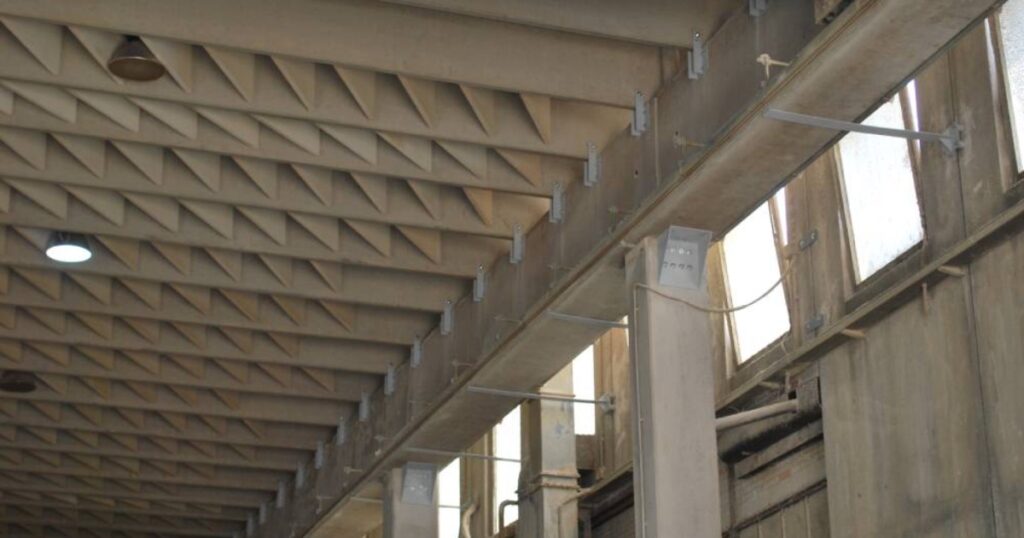
Prefabricated structure improved seismically
How to intervene with shock transmitters
In the event that the existing joints in the prefabricated building are small in terms of width and, therefore, there is a high possibility of a hammering effect occurring between the various bodies of the building, one strategy for seismically intervening is through the installation of shock transmitters, devices with which a non-dissipative rigid connection, is created between two different structures or two structural elements of the same construction.
These restraints can be installed between all the structural bodies of one or more adjacent buildings, it follows that under an earthquake these components become a single structural body, moving in unison, without pounding (or hammering) that could significantly aggravate the effects of a potential earthquake.
In practice, shock transmitters, or shock absorbers, consist of hydraulic pistons that mitigate the transmission of impulsive forces.
On the other hand, it is necessary to pay attention to the verification of the new structural sector since the new structure that is created, as a result of the individual connected structures, may show irregularities at the base and elevation level that could increase seismic stresses.
How to intervene with bracing structures
In some cases, structures with great rigidity that absorb almost all of the building’s seismic forces are built internally but mostly externally. Usually these structures are reinforced concrete partitions or braced towers that are connected to the main structure. This type of intervention is difficult to achieve for pre-fabricated buildings as it is more suitable for built on-site buildings or smaller buildings.
Metal braces are envisaged, most often on walls, in order to increase the resistance of the frames to horizontal forces, similarly to what is done for metal structures. Sometimes, pitch braces are also provided in order to create a roof plan similar to the rigid floor that gives the building a homogeneous floor behaviour.
How to intervene on reinforced concrete pillars
Reinforcements are a type of intervention used to reinforce the pillars of a pre-fabricated structure.
Also called pillar cladding, in practice they consist of the creation of an additional perimeter jacket, with additional reinforcement which is connected to the pillar via mechanical devices, i.e. HUS screws with C2 seismic certification, specifically designed for this function.
Subsequently, a casting is made with fibre-reinforced mortar (a fibre-reinforced grout) which has the characteristic of having very high mechanical resistance with reduced thickness (a minimum of 6-8 cm), in order to maximize the resistance of the warehouse pillar with minimal addition of material.
The stripping of the concrete cover is also required in order to ensure better adhesion between existing and new concrete.
How to intervene with joints, connecting elements
When possible, cuts are made in the pre-fabricated structures to create seismic joints in order to create plans that are as regular as possible (square or rectangular). In fact, the regularity of the plan is an indicator of good resistance to seismic actions as it avoids torsional deformations due to the structure caused by the excessive surface distance between the mass centre and rigid elements.
It is important to note that generally 10 cm are sufficient to install these types of joints and, in order to ensure pedestrian access, avoid water infiltration, and ensure the correct movement of pre-fabricated warehouses, these elements are generally applied to the concrete floor slabs.
There are numerous types of joints, also classified according to load capacity, in fact some joints ensure driveability while other smaller ones, are exclusively pedestrian.
How to intervene with dissipative restraints
The introduction of dissipative elements in the connections between pillars and beams greatly decreases the seismic energy that pours onto the seismic-resistant structures of the pre-fabricated warehouse, i.e. the pillars. In fact, this type of restraint, having the possibility of elastically deforming during a seismic event, allows the seismic energy of the building to be dissipated; an important characteristic is the stiffness of these connections, which must be designed in order to activate according to the project acceleration.
Another important note for these types of systems is the presence of a hysteresis diagram large enough to dissipate as much energy as possible and guarantee, as per the regulations, a minimum value of 10 cycles.
The extent of the anti-seismic intervention performed and the result obtained is always conditioned by the level of safety from which one starts, and, when undertaking a path of seismic redevelopment of the existing real estate assets, it is good to remember that interventions aimed at improving the degree of seismic resistance are deductible works thanks to the Sismabonus tax relief, obtainable until 31 December 2024.
A good objective to achieve in terms of post-intervention seismic safety index (ISV), can be equal to 75%, which is essentially the resistance of the existing building compared to a new construction, which is precisely 100%.

